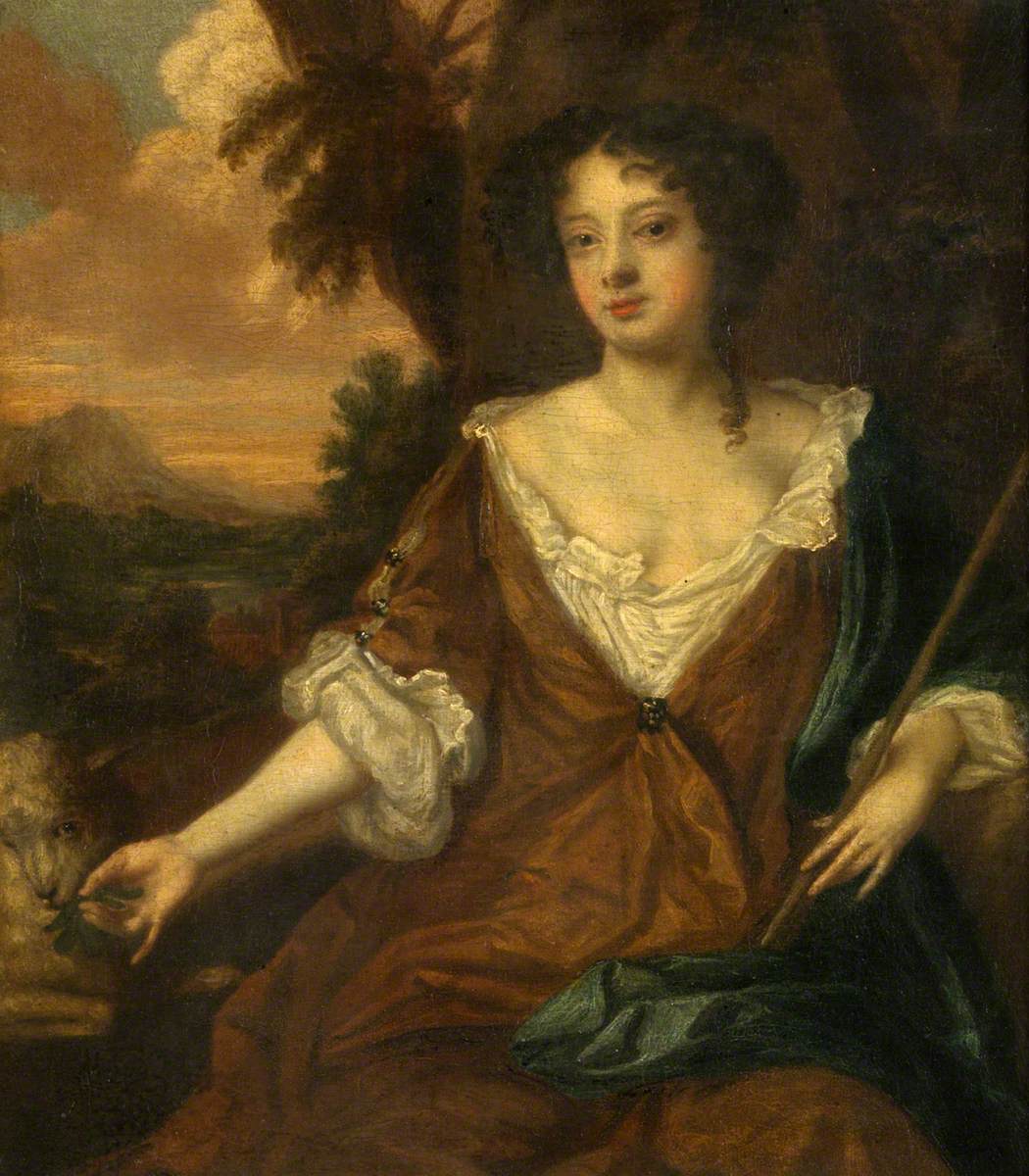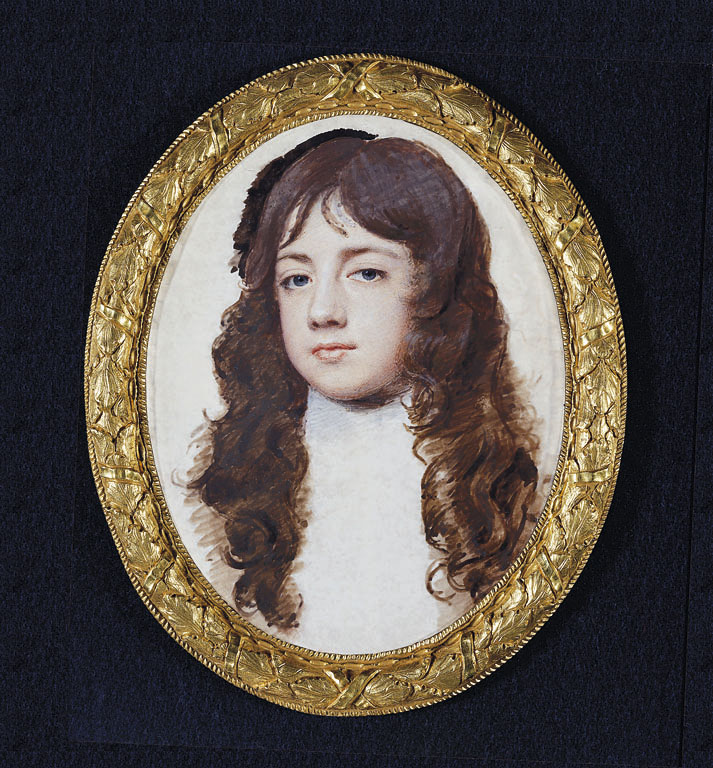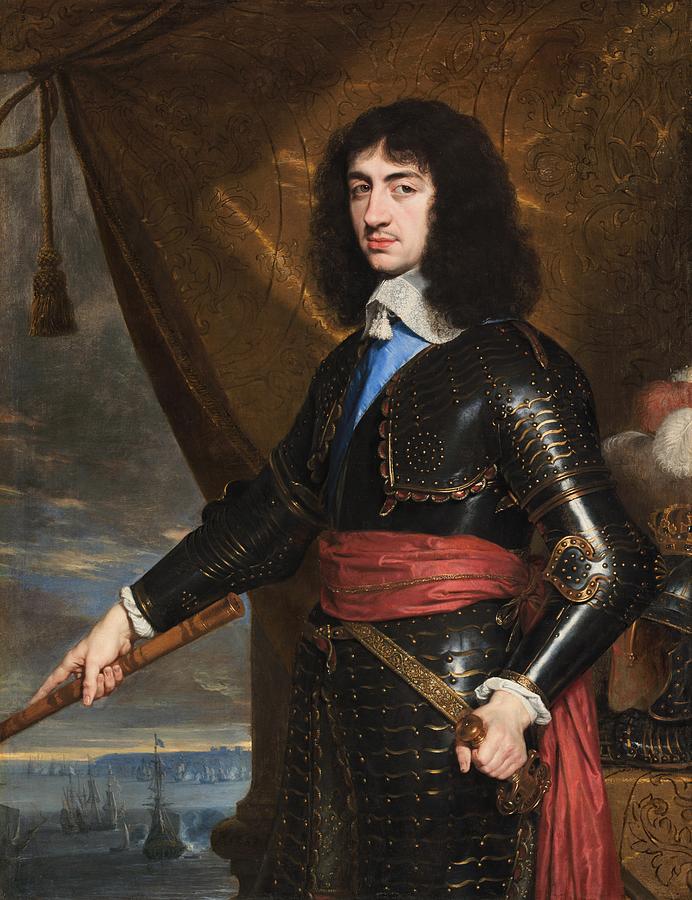by Susan Flantzer
© Unofficial Royalty 2020

Lucy Walter, as a Shepherdess by Peter Lely; Credit: Abbotsford, The Home of Sir Walter Scott
Lucy Walter was born around 1630 at Roch Castle near Haverfordwest, Wales to William Walter and Elizabeth Prothero, from landed gentry families. During the English Civil War, the Walter family supported the royalist forces and in 1644, Roch Castle was captured by the parliamentary forces and burned. The Walter family fled and Lucy found herself in London and soon set sail for The Hague, now in the Netherlands, then the capital of the States of Holland and West Friesland as well as the seat of power of States-General of the Dutch Republic, the government of the Republic of the United Provinces of the Netherlands. There Lucy Walter met Charles, Prince of Wales, the future King Charles II of England.
Charles, Prince of Wales, had traveled to The Hague, where his sister Mary, Princess Royal and her husband Willem II, Prince of Orange and Stadtholder of the United Provinces of the Netherlands lived. Charles hoped to persuade them to contribute financially to the royalist cause in the Second English Civil War which ultimately ended with the beheading of King Charles I of England. While in The Hague, the 18-year-old Charles began an affair with Lucy Walter.

Lucy and Charles’ son James, the future Duke of Monmouth; Credit – Royal Collection Trust
On April 9, 1649, Lucy gave birth in Rotterdam, to a son named James, originally called James Fitzroy, a surname often used by an illegitimate child of a king. Charles did acknowledge the child, but some thought that Colonel Robert Sidney, a younger son of the 2nd Earl of Leicester, was the father. A DNA test in 2012 concluded that James’ descendant Richard Montagu Douglas Scott, the 10th Duke of Buccleuch, shared patrilineal DNA with a descendant of the royal Stuarts, proving that Lucy Walters’ son, later James Scott, Duke of Monmouth, was the son of King Charles II of England. There was also a controversy over whether Charles had secretly married Lucy Walter. Their son claimed that his parents had married, but King Charles II said the only woman he had ever married was his queen, Catherine of Braganza. Charles and Catherine’s marriage was childless, but Charles had at least 15 illegitimate children with his mistresses, and James was the eldest of Charles’ children.

Charles, Prince of Wales, the future King Charles II, in exile; Credit – Wikipedia
In 1649, Lucy and Charles spent some time in Paris and Saint-Germain-en-Laye in France where Charles’ first cousin King Louis XIV reigned and had arranged a court in exile for his cousin. During Charles’ absences, Lucy had relationships with other men, including an Irish nobleman Theobald Taaffe, 2nd Viscount Taaffe who is likely the father of Lucy Walter’s second child Mary, born in Paris in 1651. Charles ended his affair with Lucy in 1651 but Lucy refused to accept this and even claimed that she was married to him.
For the next several years, Lucy was involved in one scandal after another, causing embarrassment to the English royal court in exile in France. In 1656, friends of Charles successfully persuaded Lucy to return to England with the promise of a pension of £400 a year. Her stay in England was brief. The intelligence department of Oliver Cromwell, The Lord Protector reported her as a suspected spy and ordered to be deported back to the United Provinces of the Netherlands.
Lucy resumed her extravagant lifestyle and her attempts to use her son James as a means of influencing Charles failed. In March 1658, after a failed attempt to kidnap James Fitzroy by supporters of Charles, Lucy was persuaded to give up her custody of her son. James was brought to Paris and placed in the care of his paternal grandmother Henrietta Maria of France, who had returned to her home country during the English Civil War. James lived in the household of William Crofts, 1st Baron Crofts who had followed Charles into exile after the execution of King Charles I of England. While living in the Crofts household, James took the surname Crofts. In September 1658, Lucy Walter died in Paris, France, probably of venereal disease, and was buried in Paris.

King Charles II; Credit – Wikipedia
In 1662, two years after his father King Charles II was restored to the English throne, James was brought to England. In 1663, 14-year-old James was created Duke of Monmouth, Earl of Doncaster, and Baron Scott of Tinsdale. On April 20, 1663, James married Anne Scott who was the 4th Countess of Buccleuch in her own right. On their wedding day, the couple was created Duke and Duchess of Buccleuch. Thereafter, James used Scott as his surname but was usually called Monmouth. The couple had seven children and Sarah, Duchess of York and Princess Alice, Duchess of Gloucester are among their descendants.

James Scott, 1st Duke of Monmouth, circa 1683; Credit – Wikipedia
Because King Charles II had no legitimate children, upon his in 1685, his younger brother succeeded him as King James II of England. However, James asserted his claim to the throne and planned an invasion of England and Scotland. He landed at Lyme Regis, Dorset, England on June 11, 1685, and proclaimed himself king on June 20, 1685. On July 6, 1685, the armies of uncle and nephew met at the Battle of Sedgemoor where the army of James was defeated. James had left the battlefield disguised as a peasant and was discovered hiding in a ditch three days later.
James had previously been attainted of treason by Parliament on June 16, 1685, and was to “suffer Paines of Death and Incurr all Forfeitures as a Traitor Convicted and Attainted of High Treason.” Apparently, he groveled at the feet of his uncle King James II, begging for his life. James was sent to the Tower of London and beheaded on Tower Hill on July 15, 1685. It took several blows of the ax to behead him. 36-year-old James Scott, 1st Duke of Monmouth was buried in the Chapel of St. Peter ad Vincula at the Tower of London.
This article is the intellectual property of Unofficial Royalty and is NOT TO BE COPIED, EDITED, OR POSTED IN ANY FORM ON ANOTHER WEBSITE under any circumstances. It is permissible to use a link that directs to Unofficial Royalty.
Works Cited
- En.wikipedia.org. 2020. Lucy Walter. [online] Available at: <https://en.wikipedia.org/wiki/Lucy_Walter> [Accessed 12 September 2020].
- Flantzer, Susan, 2014. James Scott, 1St Duke Of Monmouth. [online] Unofficial Royalty. Available at: <https://www.unofficialroyalty.com/april-9-1649-birth-of-james-scott-1st-duke-of-monmouth-illegitimate-son-of-king-charles-ii-of-england/> [Accessed 12 September 2020].
- Flantzer, Susan, 2016. King Charles II Of England. [online] Unofficial Royalty. Available at: <https://www.unofficialroyalty.com/king-charles-ii-of-england/> [Accessed 12 September 2020].
- Fraser, Antonia, 1979. King Charles II. London: Phoenix.
- Nl.wikipedia.org. 2020. Lucy Walter. [online] Available at: <https://nl.wikipedia.org/wiki/Lucy_Walter> [Accessed 12 September 2020].
